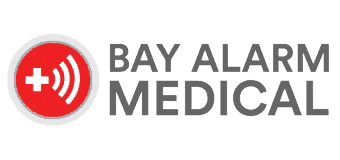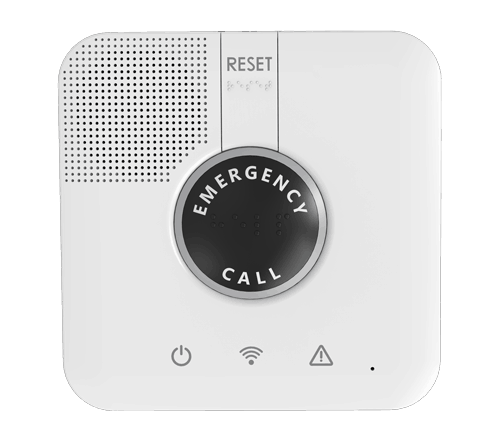
GetSafe Medical Alert System Review

The Senior List is compensated when you click on the provider links listed on this page. This compensation does not impact our ratings or reviews. Click here to learn more about our editorial review process and click here to learn more about how we are compensated.

More Favorites From The Senior List
We picked out a few more recommendations worth considering:
As a professional caregiver, I’m always looking for the best medical alert systems that can help seniors feel more at ease. New medical alert device technology has provided plenty of options to help people avoid being tied down by lanyards or traditional wearables.
GetSafe offers a premium medical alert system. Its monitoring center is UL-certified and licensed in all 50 states.
In this review, I’ll tell you all about my experience with GetSafe’s medical alert system
.
Pro Tip: If you’re new to the world of medical alert systems, check out my comprehensive guide to medical alert systems.
Pros and Cons of GetSafe Medical Alert Systems
Pros
- No buttons required: GetSafe’s standard and voice-activated help buttons are the perfect options if you don’t want to wear a traditional pendant or wristband help button.
- 30-day risk-free trial: GetSafe’s medical alert system comes with a 30-day risk-free trial. Pricing is based on the size of your home.
- Optional wearables: If you don’t mind wearables, GetSafe offers a help button attached to their optional,100 percent waterproof wearable. It’s both lightweight and aesthetically pleasing.
- No landline required: GetSafe’s monthly service fee is $24.95, which includes 24/7 monitoring. No landline is required since all GetSafe plans include AT&T 4G LTE cellular coverage.
- Caregiver tracking: For GetSafe’s mobile system, loved ones can use a smartphone app to keep track of a user’s location, in addition to receiving notifications in the event of distress calls.
Cons
- Up-front Equipment Costs: Depending upon your system, you may need to pay a hefty equipment fee in addition to the cost of the monthly monitoring service.
GetSafe System Overview
GetSafe offers three plans featuring their voice-activated wall button, standard wall button, and 4G LTE base unit. The plans are based on the size of the living space and/or the number of bedrooms that require 24/7 monitoring and coverage. As mentioned above, each plan has an equipment cost in addition to the cost of the monitoring.
Here’s an overview of the plans:
- Starter (0-1 bedroom): If you have a small living space, the Starter plan may be ideal. It includes a two-way voice button and 4G LTE base unit. The voice button can be installed in the bathroom or another area where users might be prone to accidental falls.
- Standard (2-3 bedrooms): As the most popular option, this plan is great for added peace of mind and safety. The Standard plan features two voice-activated buttons, one standard wall button, a 4G LTE base unit, and a complimentary lanyard button. You can install these products anywhere around the house to monitor for slips and falls.
- Select (4-5 bedrooms): This plan is best for users residing in larger homes or spaces, as there are enough products included to cover multiple rooms. If you have a multi-level residence, you can place the two standard wall buttons near the stairway or upstairs bedrooms, and the three voice-activated buttons in areas where you may be unable to summon help.
GetSafe Medical Alert Features
| Two-Way Talk | Yes |
|---|---|
| Connectivity | Cellular |
| Average Response Time | 25-30 seconds |
| In-Home Range | 1,000 feet |
| Fall Detection | $10 a month (add-on) |
| Caregiver Portal | Not available |
Using the GetSafe Medical Alert System
I decided to get the Standard plan, which, in addition to the monthly monitoring fee, has a $149 equipment fee, and includes the following:
- 1 4G LTE Base Unit
- 2 Voice-Activated Wall Buttons
- 1 Standard Wall Button
- 1 Complimentary Lanyard Button
Add-ons: With any GetSafe plan, you can add additional features, such as fall detection monitoring for $10 a month and a mobile GPS help button for $79.
Installation and Activation
Installing my GetSafe medical alert system was hassle-free. After removing the base unit from the packaging, I inserted it into a standard wall power outlet. All I had to do next was flip the switch on the back of the device to “on” and give the system a few minutes to power up.
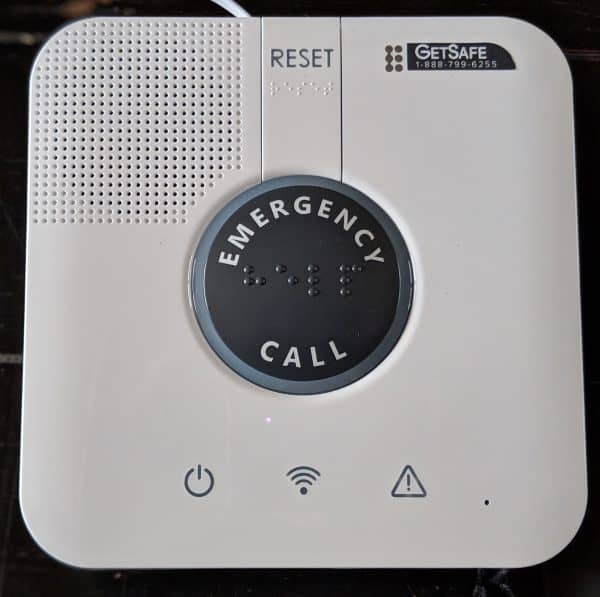
The device then blinked to let me know it was ready and active. A helpful voice said “control panel on,” and then the unit measured the strength of the cellular signal. I then checked to make sure that both the power button and the connection signal were green.
I suggest placing the base unit in a place that has a strong signal. Keep in mind that the main device has a circular “Emergency Call” button. Pushing it will immediately connect you with a dispatcher at the GetSafe monitoring center.
After activating the base unit, I installed the buttons in fall-prone areas, such as bedrooms, the bathroom, and the kitchen.
Did You Know: Need to install a medical alert system component in a bathroom or kitchen? GetSafe’s voice-activated wall button is compact and water-resistant.
Testing the GetSafe Medical Alert System
When I tested the system, I was amazed at its effectiveness and user-friendly features. Unlike traditional wearable devices, these products are conveniently designed to be fully integrated into your home. I mounted the devices in hallways, bedrooms, and other high-risk areas.
I also installed one of the voice-activated wall buttons in the bathroom, where slips and falls commonly happen. If you are not able to activate the button, the voice-activation feature can be a lifesaver. I was impressed with the voice-activated features on this button. All I had to do was say “call 9-1-1” twice. Alternatively, I could press the button or the pull cord.
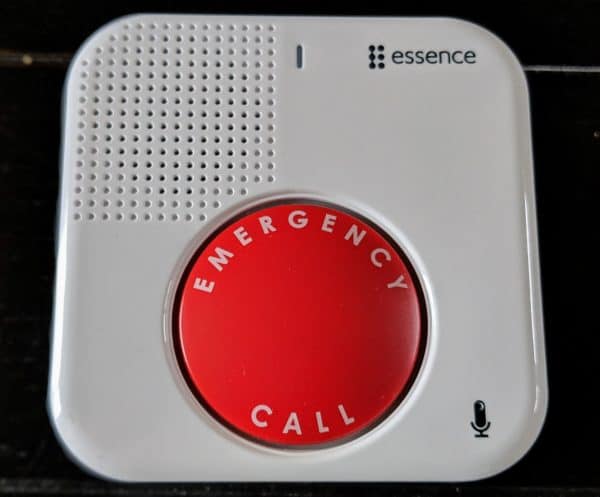
I placed the base unit in the kitchen. I tested it by pressing the “Emergency Call” button, which connected me to a dispatcher at GetSafe’s monitoring center in approximately 25 seconds. I was amazed at how quickly I was connected.
When it comes to the battery life of the complimentary lanyard button, there’s no contest; it lasts up to five years before needing replacement. Plus, the lanyard button is 100 percent waterproof.
I was also pleased with the additional features that can be added to any plan. For just $5 a month, I could add a handy caregiver mobile tracking GPS to monitor my client’s whereabouts and keep them safe.
All in all, I was very impressed with the responsiveness and ingenuity of the products, and the fact that GetSafe’s devices are waterproof. If you don’t want to wear a lanyard or medical device around your neck, GetSafe is a reasonably priced alternative that can keep you or your loved ones safe.
GetSafe Medical Alert Systems Pricing
GetSafe’s monthly pricing is based on the size of your living space or the number of bedrooms that would require a medical alert device. For example, the Starter plan costs $24.95 a month for 24/7 monitoring fee plus $79 for the equipment. That is $103.95 for a basic plan that covers one room.
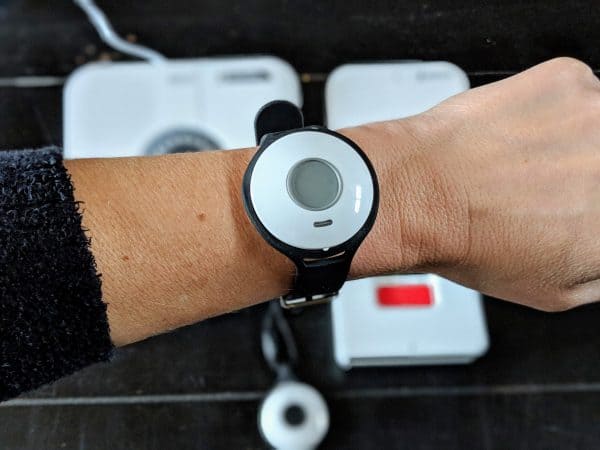
For all plans, you can add an extra voice-activated wall button for $79 instead of selecting a higher-priced plan. The Select Plan helps cover “multi-level living spaces.” If you have a stairwell, multiple bathrooms, and/or other high-risk areas, this plan might be best.
All orders currently qualify for free shipping, and there’s a 30-day risk-free trial to test the system. For more information on other GetSafe plans, check out my GetSafe pricing and plans page.
Final Thoughts on GetSafe
Overall, GetSafe is an easy-to-install system that is user-friendly, durable, and high-quality. With three plans to choose from, with affordable monthly pricing, you can have peace of mind knowing help is just a call away.
Similar to the Lifeline medical alert system, which provides two-way voice communication, GetSafe also helps users get immediate assistance with the touch of a button or a voice command.
For example, if your loved one forgets to wear their medical device, GetSafe offers plenty of options to call for help. Although GetSafe doesn’t have a caregiver portal, you can add caregiver tracking and fall detection after selecting a plan. For many users, fall detection is a top priority, and it can be easily added to an existing plan.
I’d recommend GetSafe if you’re looking for:
- An alternative to wearables: With GetSafe, you can eliminate wearables; they’re optional. GetSafe has a “passive medical alert system” in the form of a pull/press button, voice-activated features, and more, making it one of the best voice-activated medical alert systems.
- A straightforward pricing plan: If you don’t want to be bound by a contract, GetSafe offers affordable monthly pricing with no long-term commitments.
- Responsiveness: If you or a loved one needs assistance, GetSafe will connect you to a dispatcher within 25 to 30 seconds.
- Coverage throughout the home: If you’re looking to cover more areas of your home or you have a larger home, the range of GetSafe devices can help. The devices are also 100 percent waterproof, so you don’t have to worry about getting them wet.
I wouldn’t recommend it if you want:
- In-home caregiver tracking: Unfortunately, there is no caregiver portal for GetSafe’s in-home systems. If this is a feature you’re interested in, you may want to check out a system from Aloe Care Health.
- Low equipment costs: When you choose a GetSafe plan, you’ll have to pay up-front equipment costs, which can be pricey. If you don’t want to pay for equipment, I recommend looking into Bay Alarm Medical’s systems, which don’t require equipment fees.
GetSafe Medical Alert System Frequently Asked Questions
-
What types of emergency response devices are included in the GetSafe plans?
GetSafe offers three plans: Starter, Standard, and Select. You’ll get a 4G LTE base unit, personal help button(s), and other features depending on the plan you select.
-
When I click on the “Emergency Call” button on my device, how soon will I receive assistance?
Generally, you should be connected to a dispatcher within 25 to 30 seconds. The 4G LTE base unit will connect you to the monitoring center.
-
What types of options does GetSafe have for getting immediate medical emergency assistance?
Currently, GetSafe offers quality devices that have pull, push, and voice-activated call features to help you get assistance right away. You can also add features like an optional wearable or GPS tracking.
-
Does GetSafe have a fall detection feature?
Yes, but it’s available only as an add-on. Fall detection monitoring costs $10 a month. The fall detection device has a help button. It’s lightweight, aesthetically pleasing and can be worn as a necklace.



